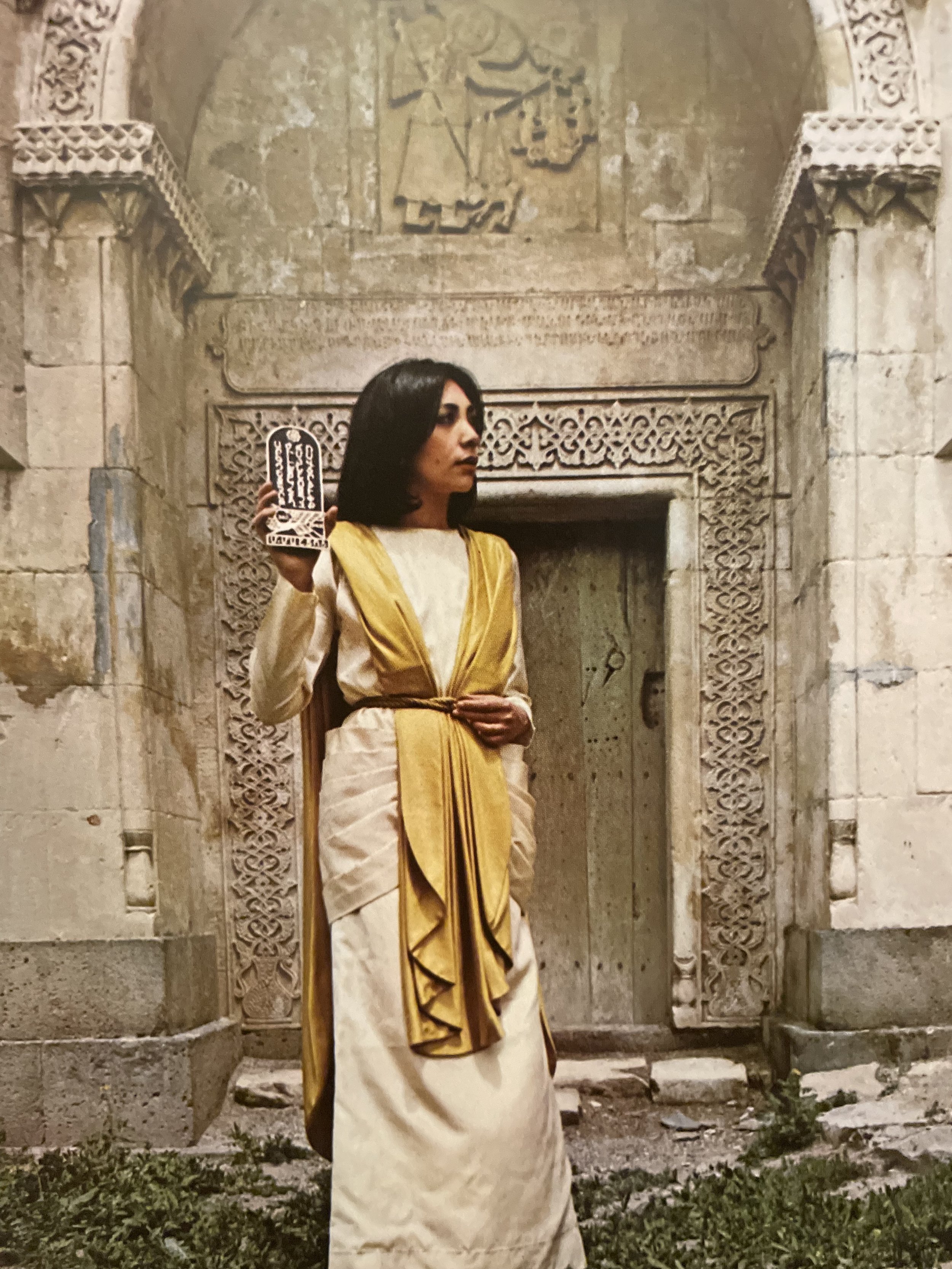Exhibiting Armenian Fashion: Traditional Taraz Through Time
Understanding
Armenian
Fashion
Expressing tastes and preferences through fashion is an omnipresent concept that stretches past oceans, borders, and time. About 6,500 miles away from Norman, Oklahoma, is Yerevan, the capital city of Armenia. The Armenian woman has historically used traditional dress for self-expression and spearheaded cultural trends that society followed.
Armenia is neighbored by Georgia, Turkey, Iran, and Azerbaijan in the South Caucasus. Historically, Armenia was involved in the trade of domestic labor goods, including spinning, weaving, and dying cloth to sew costumes. These costumes evolved through trade and influences from other cultures. With the circulation of leather goods and silk among Armenian populations in the 2nd and 3rd Centuries B.C., unique patterns, accessories, and fabrics added to the look of Armenian costumes. These traditional costumes, or “taraz” in Historic Armenia, varied depending on the wearer’s social class, age, and the context in which the costume was worn. Although contemporary Armenians no longer wear costumes, children, and adults wear them for traditional folk dance performances worldwide.
In the early 1970s, the Armenian Cultural Club of Tehran, Iran, fabricated an exhibition that showcased Armenian costumes throughout time. My grandma, an Armenian who grew up in Tehran, attended this exhibit and gave me first-hand experiences and insight into the show. The exhibition was made into the book The Costumes of Armenian Women, which explores the traditional dress over hundreds of years and draws costume inspiration from historical sketches and paintings. Below are examples of conventional Armenian dress from the exhibition catalog, taken from various historical times and contexts.
Lady From Davrej (18th Century)
This costume incorporates contrasting tones of bright reds and light blues. The skirt fabric has an intricate pattern with a European flair, and the ensemble is complete with a leather wrap belt and embellishments around the neckline. The kot, or headdress, is characterized by fabric dyed in “the famous Armenian crimson, a distinctive color traded by merchants far and wide.”
Citizen Woman from Talin (5th-6th Century A.D.)
This costume is characterized by clean lines and simple colors, representing a literarily and economically advanced society. A brown leather belt fastens the pleated skirt and drapes yellow cloth. The woman holds a plaque of the Armenian alphabet, written and established in the early 5th Century.
Shamakh (19th Century)
This bridal dress incorporates the traditional Armenian crimson fabric with gold embellishments and lace. Although these details seem ornate, according to The Costumes of Armenian Women, they were widely utilized in conventional dress, regardless of status. It was familiar and famous for all classes to enjoy intricate clothing design, especially since these women often made their clothing. The bridal dress has a few unique characteristics: the veiled kot and a surplus of jewels, gold, and delicate fabrics woven with precious metals to produce a glittering effect, as the bridal gown was a recognized work of art, an extension of the bride’s beauty.
Written by
Seda Propes







